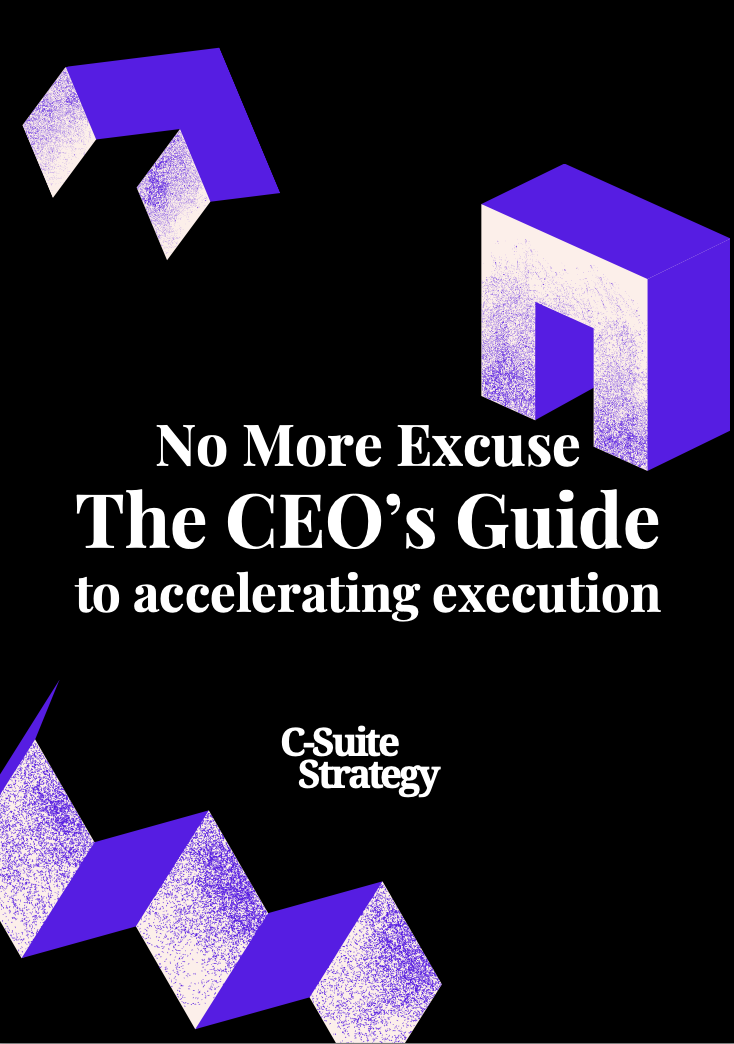
Understanding the CEO Excellence Initiative
Decoding the CEO Excellence Initiative: A Definitive Guide
The CEO Excellence Initiative is more than just a buzzword; it is a comprehensive approach designed to groom CEOs for outstanding leadership in the modern business landscape. Its core purpose is to equip top executives with the necessary leadership skills to drive their organizations towards achieving long-term strategic goals.
In the competitive arena of executive leadership, CEOs benefit immensely from participating in programs that focus on strategic alignment, resource allocation, and decision making. This initiative connects CEOs with cutting-edge strategies that address various facets of business management, fostering growth and excellence in their roles. Such programs lay the foundation for transformational change and nurture the strategic vision necessary to maintain a competitive advantage.
Moreover, the CEO Excellence Initiative promotes collaboration among leadership teams and executive teams, encouraging professional development across the organization. Participants will delve into business strategies that support effective strategy execution, ultimately allowing them to lead their companies towards sustained success.
As business leaders engage with this initiative, they find themselves better poised to navigate the diverse challenges inherent in the CEO role, which we will explore further. From enhancing business acumen to amplifying leadership development efforts, this program is a significant step towards becoming an exemplary leader in today's dynamic business world.
To remain competitive and achieve organizational goals, the CEO Excellence Initiative is an essential program for CEOs aiming to refine their leadership capabilities and drive change within their companies.
Strategic Alignment and Vision
Aligning Leadership Vision with Business Strategy
In today's rapidly evolving business environment, a strategic alignment between leadership vision and business objectives is crucial for CEO excellence. This alignment fosters a unified direction and propels organizations toward their goals effectively. While the CEO's role is pivotal in orchestrating this alignment, it requires a nuanced understanding of both strategy execution and decision-making processes. Drawing on insights from leadership development programs, CEOs can harness the power of strategic vision to create a framework that aligns with company objectives. These programs often emphasize resource allocation decisions and strategic choices that advance long-term growth. Moreover, executive teams that possess a shared vision tend to drive greater business excellence, leading to a competitive advantage. Participants in leadership development initiatives, such as the CEO Excellence Initiative, are encouraged to focus on strategies that align with current market dynamics while anticipating future trends. This proactive approach helps leaders navigate the complexities of business change and maintain a cutting-edge stance in their respective industries. Organizations should ensure their CEO's vision is supported by professional development and growth opportunities, allowing for a seamless integration of new strategies. By doing so, they enhance not only individual leadership skills but also the overall effectiveness of leadership teams. For CEOs looking to enhance their leadership capabilities, leveraging resources like remote CEO coaching can prove invaluable. Such tools are designed to enhance strategic decision-making and prepare business leaders to tackle unforeseen challenges with agility. Ultimately, a well-aligned strategic vision lays the groundwork for successful strategy execution, enabling businesses to achieve their objectives and sustain excellence in an ever-competitive landscape.Leadership Skills for the Modern CEO
Empowering CEOs with Transformational Leadership Skills
In today's fast-paced business world, CEOs need to master a unique set of leadership skills that align with the evolving demands of their roles. The CEO Excellence Initiative emphasizes the importance of this skillset, aiming for strategic vision and superior business management. This program focuses not just on cultivating traditional leadership skills but expanding them to include growth-oriented and strategic initiatives. By doing so, CEOs can ensure that their companies remain competitive and adaptable in a rapidly changing landscape.- Decision Making and Strategic Execution: CEOs are constantly faced with crucial decisions that impact their organizations. Developing skills in strategy execution ensures they can align business strategies with long term goals. This involves a profound understanding of resource allocation that directly correlates with company growth and innovation.
- Leadership Development for Competitive Advantage: Leading executives must foster an environment that promotes leadership development. By doing so, they create leadership teams that are not only adaptable but also poised to leverage competitive advantages. This requires a commitment to both professional development and talent development.
- Navigating Organizational Change: As the anchors of their organizations, CEOs must be adept at implementing change within their companies. The excellence programs help them develop the strategies needed to not only embrace change but lead their organization through transitional periods effectively.
Navigating Challenges in the C-Suite
Overcoming Obstacles in the Executive Sphere
Navigating the complexities of the C-suite is an inherently challenging endeavor. As CEOs steer their organizations, they confront numerous hurdles that test their leadership acumen and strategic prowess. To effectively guide their companies through change, business leaders must be equipped with cutting edge decision making and strategy execution skills.- Maintaining Strategic Vision: Ensuring that the company's long term goals align with the shifting business landscape requires a careful balance of strategic insight and adaptability. Successful CEOs must consistently realign their organization's strategies to sustain competitive advantage.
- Effective Resource Allocation: Maximizing the potential of company resources is crucial for growth. Leaders must judiciously allocate talent and capital, fostering an environment where executive teams thrive and professional development flourishes.
- Cultivating Leadership Development: Engaging in comprehensive leadership development programs can mitigate the risks posed by organizational changes. These Ceo excellence programs help participants sharpen their leadership skills, ensuring they are well-prepared to tackle unforeseen challenges.
- Decision-Making Excellence: With an emphasis on clarity and precision, CEOs need to excel in decision making, especially in the face of uncertainty. They must be adept at evaluating scenarios and making informed choices that benefit the organization.
Measuring Success in Leadership Programs
Assessing Leadership Success
Measuring the success of leadership programs, especially those geared toward CEOs, is no small feat. The impact of CEO excellence initiatives can often be observed in how effectively leaders steer their organizations toward achieving their strategic goals. But what metrics genuinely reflect progress in this domain?- Alignment with Strategic Vision: Evaluating whether the program participants are aligning their leadership strategies with the company's long-term vision is crucial. CEOs must not only develop but also continually adapt their strategic vision in response to changing market conditions. This involves not merely setting goals but ensuring these goals translate into actionable strategies.
- Improvement in Decision-Making: Modern CEOs must exhibit refined decision-making capabilities. Programs aimed at CEO excellence typically focus on bolstering these skills, enabling leaders to make informed, timely decisions that leverage competitive advantage.
- Resource Allocation Efficiency: Effective business management requires adept resource allocation. The ability of a CEO to allocate resources efficiently can serve as a yardstick for the success of leadership programs. It reflects the leader's capability to balance short-term objectives with long-term growth strategies.
- Organizational Change and Adaptability: In today's fast-paced business environment, the ability of CEOs to drive and manage change cannot be overstated. Successful leadership programs often result in executives who are not only proactive in seeking change but also skillful in executing it. This adaptability is indicative of a solid grasp of strategic leadership.
Tools for Measuring Success
Leaders seeking to evaluate the effectiveness of CEO excellence initiatives have a variety of tools at their disposal:- Assessment Frameworks: Regular feedback mechanisms and leadership assessment frameworks can offer insights into how CEOs are progressing towards their defined leadership goals. These frameworks often employ qualitative and quantitative measures to provide a holistic view of leadership effectiveness.
- Benchmarking: Comparing the performance of executives who have participated in leadership development programs against those who haven't can yield valuable insights into program efficacy. This comparative analysis can highlight potential areas of improvement within the leadership initiatives.














